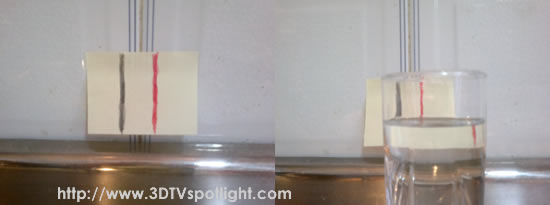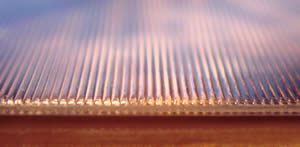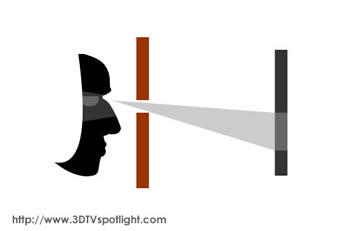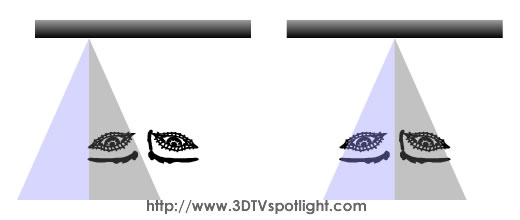ADVERTISEMENT
lea en Español
What are Lenticular and Parallax Barrier Technologies, How do they work?
As you are probably aware already, we want to send two different images, each one for each eye, coming from the same source; in other words, we want to do 'tricks with light'. Some tricks with light are achieved with mirrors and lenses of different shapes, and some can be used here if the lenses are small enough.
Since quite some time, there have been around some printings in greeting cards, cereal boxes, novelty articles, bookmarks and some things that are not immediately related to technology or TV; even though, it is interesting to see the effect achieved on these things. Some of them present a scene where you can move the card a little and they change the image displayed, presenting some kind of animation like an eye winking or something like that; others display a 3D image that can be perceived with depth without the need of special glasses or some other resource.

What these printings do is, they have all the images printed in a base layer (all images in the animation sequence, or the different images that should reach each eye), which can be just any card or printed material; the trick is what comes next: they have a layer that can send different parts of the image in different directions. To send images in different directions sounds like something very advanced, but we see this effect mostly on a daily basis: this is what happens when we look at a drop of water, or through a glass, or at anything transparent with curved surfaces.
When light travels through a transparent material, the 'exit direction' depends on the direction of the surface; we see this for example, with loupes and any kind of magnifying glasses (even those used as eye wear).

Now to achieve the stereoscopic effect that lets us perceive depth, we do exactly the same, but in small scale: we print parts of the image below, and place some lenses or some transparent material with curved surfaces in the next layer, to send different parts of the image in different directions

Image from Wikimedia Commons via Wikipedia. Author: World Imaging.
Used under terms of permission.
ADVERTISEMENT
Some electronic devices use the same idea, but instead of a printed card, they place a screen, which can change the image displayed; also, instead of a layer with curved-carved surface, they use something called a 'parallax barrier' which has the same function. The parallax barrier may have some slits, which let the user view what is behind, depending on the position of the eye; this is like watching through a 'peephole', where the watcher may have to change his or her position to view some parts of the room behind it. In the case of the parallax barrier, we are watching through thousands of peepholes located over the pixels of the screen that displays the image.


Just as in the case of the peephole, what the person is viewing through it depends on the position of the viewer, in the case of the parallax barrier (or lenticular layer) happens the same. To achieve the stereoscopic effect where the user perceives an image with depth because he or she is receiving the correct image in each eye, the user has to be in an adequate position relative to the screen.
This is why this type of screens, even though it allows the user to perceive depth without special glasses, is not commonly used for TV sets or some other kind of use where large screens are required. If there were many people watching a movie in the same TV set, they all would have to be located in special positions, probably one behind the other in a single line, and the last one would be watching more of the heads of the people in front of him instead of watching the movie; also, this may not go well with the idea of having a TV set and many people watching the movie comfortable in a sofa, eating some popcorn. Even for a single user, different parts of the screen are in a different situation.

Nonetheless, this type of screens has been proven successful in small formats, such as these used in portable gaming devices or in some cases, in cell phones, where the user holds the device always in the same position, and only one user is watching at a time.
ADVERTISEMENT